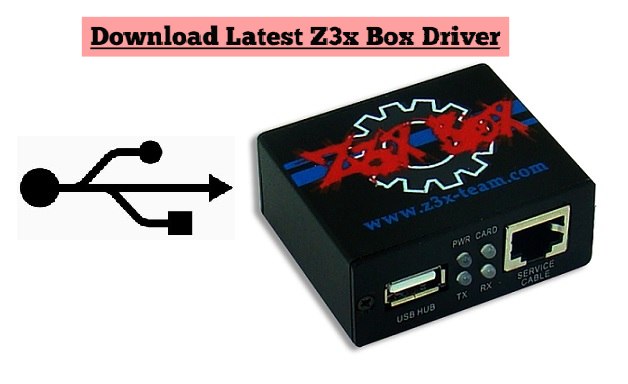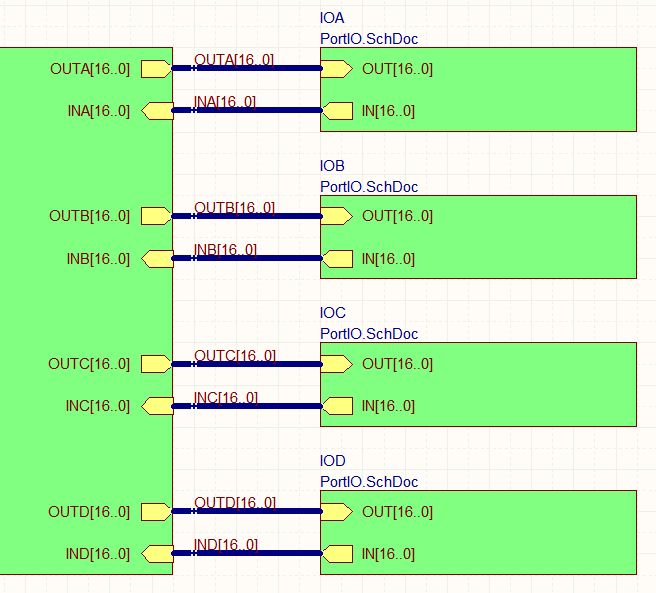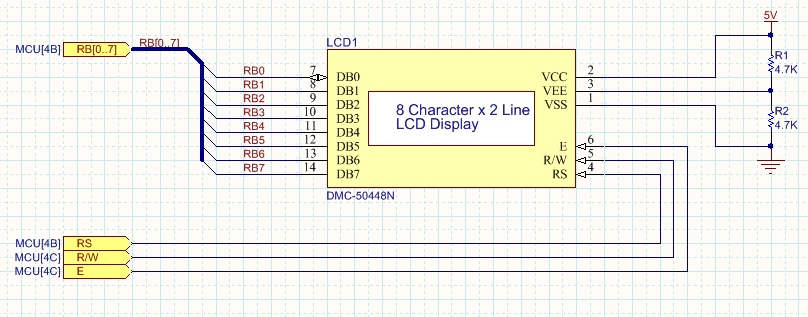If the device is not on the list, the support may be limited to the Live Update of pin state of the device. Connecting to third-party boards using an alternate Mini-HDMI connection cable For a Mini-HDMI connection to a third-party or custom developed target board the Tag-Connect cable can be used together with Altium's USB JTAG adapter. The KSZ9893 is a fully integrated layer 2, managed, three-port gigabit Ethernet switch with numerous advanced features. Two of the three ports incorporate 10/100/1000 Mbps PHYs. The other port has interfaces that can be configured as RGMII, MII or RMII. This port may connect directly to a host processor or to an external PHY.
- Parallel Port Driver Is Not Supported - Error Message ..
- Windows 10 Update Stopped IEEE-1284 (Parallel)-USB Adapter ..
- Altium Port Devices Driver Download
- Altium Port Devices Driver Updater
Whether you are using PNY or Kingston USB, it is common for you to encounter Device not recognized issues or USB issues specifically on Windows 10. You may often find Windows cannot find your USB or the USB shows itself in Unknown devices.
When you have some significant sources on your USB to be used at once, there exists annoyance if USB cannot be detected or USB port is not working in some vital case. Therefore, chase after this post to get the way to fix this USB not working on Windows 10 as soon as possible.
Solutions:
Solution 1: Check USB Port and Power Supply
One must make sure the USB and USB port are usable if you would like to make use of USB on Windows 10. As USB is a data storage device that includes flash memory with an integrated USB interface on Windows 10, now it is widely used. Thus it is natural that USB port goes wrong if used frequently.
You cannot ignore that not only broken USB but also damaged USB port can cause your USB not working or detected on Windows 10.
So it is in great need for you to check if your USB ports are working well. If your USB failed to work with port 3.0, try to plug it into USB 2.0 port.
Sometimes, power state can also induce this USB not detected or working issue, you can manage to check the power supply of your PC. Maybe it is in the low power supply that the USB cannot be accessible.
By checking the USB ports working condition, you have also excluded the possibility that it is the hardware that results in USB not recognized.
Solution 2: Uninstall USB drivers
Some people find even though their USB or SD cards were detected, they could not open any file which denotes the USB is still undetected on Windows 10. Or the USB works fine with port 2.0 but failed to perform with port 3.0, maybe the problem lies in USB drivers. In this way, make sure you have the most up-to-date USB drivers.
1. Open Device Manager.
2. Locate and expand Universal Serial Bus controllers.
3. Right click the USB drivers to Uninstall device.
Here you will find many USB drivers, manage to uninstall them all.
4. Confirm to Uninstall the USB drivers.
Then you will have deleted the USB drivers from Windows 10, what you need to do next is to download or update the USB driver with the latest version to see if it can make the USB detected or back to work on Windows 10. At this moment when you have just uninstalled USB drivers, Scan for hardware changes can help you find the new USB drivers.
Solution 3: Update USB drivers
As suggested, outdated or corrupted USB drivers can also lead your USB to be undetected or inaccessible. Updating them is a necessary fix. And if scan for hardware changes to enable Windows 10 won’t find the latest USB 3.0 drivers for you, turn to Driver Booster.
Driver Booster would download the most up-to-date USB drivers for you, including USB port driver, USB Root hub and Universal Serial Bus Controller. In this way, you are able to fix this USB not detected or not working issue on Windows 10 with the newly updated USB driver.
1. Download Driver Booster on Windows 10.
2. After installing and running it, click Scan to let Driver Booster look for the outdated, missing, and corrupted device drivers.
3. Find out Universal Serial Bus controllers and then hit Update to update the USB driver.
If there is more than one USB device, decide to update them all.
With the up-to-date USB drivers, you can reconnect the USB device to see if it can be detected by Windows 10 and work smoothly for you.
Solution 4: Change Power Management Settings
If you have investigated all the aspects of the USB ports, USB still undetected on Windows 10, you can also change power management settings to disable power saver.
1. In Device Manager, locate and right the USB driver under Universal Serial Bus controllers to open its Properties.

2. In Properties window, under the Power Management tab, uncheck the box of Allow the computer to turn off this device to save power.
3. Then navigate to the Properties of all USB root hub to disable this power saver setting for them.
Reconnect your USB device into PC and you won’t be plagued by USB or USB ports not working on Windows 10.
Solution 5: Disable USB Selective Suspend Setting

This USB Selective Suspend setting aims to reduce power consumption when there is a certain USB port is in idle, this feature comes into use to make the idle USB port in low-power condition, in other words, in suspending state.
According to many users, this USB Selective Suspend setting can to some degree cause USB mouse, keyboard not working on Windows 10. So you can make an attempt to disable USB Selective Suspend settings in advanced power settings.
Solution 6: Run Hardware and Device Troubleshooter
Windows 10 can use troubleshooters with own device properties to detect and fix different devices errors. For this USB not recognized or working issue when plugging in, it is also advisable to activate the hardware and device troubleshooter.
1. Search Troubleshoot in the search box and stroke Enter.
2. Navigate to Troubleshoot, scroll down to Hardware and devices and click Run the troubleshooter.
Windows 10 would detect your device errors and in this process, may the issue that USB cannot be detected or recognized be solved in this way.
Solution 7: Check for Windows 10 Updates
In some sense, right after upgrading to Windows 10, USB devices or USB ports are not recognized by Windows 10 or the USB devices have no response on PC. On that condition, you are supposed to make sure Windows 10 is updated with brand-new features and improved functionalities.

1. Navigate to Start > Settings > Update & Security.
2. Under Windows Update, choose to Check for updates.
If there are any updates, Windows 10 will install them for you. You need to reboot your PC to take effect.
In a word, USB issues will disappear if you can obey the procedures earnestly on Windows 10. And with these solutions, you are able to make your USB be accessible or detected on Windows 10. You can also get the USB memory stick drivers in compatibility mode for Windows 10. Under this circumstance, USB driver problems may also be resolved, for instance, computers shut down when inserting USB devices.
Vector network analyzers (VNAs) are the workhorses of RF signal integrity measurements and have traditionally been used by microwave engineers to design microwave components and antennas. Today’s digital designers working with ultra-fast signals need to think in terms of mmWave concepts and understand what VNA measurements mean, specifically S-parameter measurements and resonant measurements. You can thank ultra-fast edge rates and high bitstream rates for pushing signal bandwidths well into the GHz regime to the point where digital designers now need to be analog experts.
If you know how best to interpret VNA measurements from your interconnects, you can learn something about the material properties of your substrate without destructive testing. You can also determine whether your design needs to change in order to meet your signal integrity goals.
What Does a VNA Measure?
The theory of operation behind a VNA relies heavily on network analysis for waves propagating in electrical networks. A VNA is sometimes compared to a DC multimeter, except that the VNA measures electrical behavior for AC signals. This is not exactly correct, but it’s a step in the right direction. The “N” in VNA stands for “network,” meaning the VNA measures how a sourced signal interacts with an electrical network. A typical measurement setup with an N-port device under test (DUT) is shown below.
When a propagating signal is an incident on an electrical network, some power is reflected from the input port, and some power is transmitted through each output port. The reflected and transmitted power can be measured by the VNA (both magnitude and phase), which can then be used to determine the S-parameters for pairs of ports in the device. A VNA can also be used to measure voltage at the input and output ports, which then gives the voltage transfer function for the network. You can use these data in a range of other analyses.
By taking advantage of these characteristics of a VNA, material properties can be inferred from VNA measurements. In these measurements, you can use two classes of methods with the material to be examined placed as the DUT:

- Resonant methods: These involve using the VNA to compare the measured resonance frequency for a reference material and the material under test. This requires using a waveguide test structure with an established model for the resonance frequency as a function of Dk and geometry. S-parameters are not directly measured in this method.
- Non-resonant methods: Material characteristics are determined from S-parameter measurements (either reflected or transmitted power). Common reference structures used in this measurement are waveguides, transmission lines, open-circuit coaxial probes, or transmission through free-space.
VNA Measurements for PCB Materials

Here, I’d like to focus on a non-resonant S-parameter method as this is more common for designers who don’t work at laminate companies. There is one simple way to learn something about your material parameters and a more complex method to calculate dielectric constant/magnetic permeability directly.
Long Transmission Line Limit
One way to see how material properties affect signal behavior is to look at a long transmission line and its S21 measurements. In the limit of a long transmission line, you can quickly extract an average Dk value for the substrate material simply by looking at the slope of the S21 data on a log scale. You can then see how dispersion and the loss tangent affect insertion loss in the channel.
By comparing with a reference material, the dielectric constant can be determined by looking at the slope of the magnitude and phase of your S21 curve for your material under test. However, this is only valid when dispersion is relatively small, and the line is very long; obviously, this does not cover every situation, such as a reflection-dominated short transmission line. To get back to Dk values from measurements for any line length, we need more sophisticated conversion methods.
Non-resonant Transmission Line Methods
Non-resonant methods are more likely to be used as part of interconnect design and testing for high speed signals, where a real interconnect needs to be evaluated for use with a broadband signaling standard (e.g., USB 4). By looking at the non-resonant S-parameter data measurement with de-embedded fixtures, the data can be related back to material properties using standard models for your interconnect. This measurement process and conversion techniques for determining Dk/Df are valid up to the TEM limit for transmission lines and coplanar waveguides.
Parallel Port Driver Is Not Supported - Error Message ..
Suppose you have the S-parameters for your test channel after de-embedding. You can use one of the following methods to convert from your S-parameters back to a Dk, Df, and magnetic permeability values.
The table below lists some of the basic signal integrity requirements that apply in the PCIe 5.0 standard.
Method | Inputs | Outputs |
Nicholson-Ross-Weir method | All S-parameters | Dk, Df, magnetic permeability |
NIST iterative Created by y.k driver download. | All S-parameters | Dk, Df, magnetic permeability |
New non-iterative | All S-parameters | Dk, Df, magnetic permeability |
Short circuit line | S11 only | Dk., Df |
Windows 10 Update Stopped IEEE-1284 (Parallel)-USB Adapter ..
Going over the finer points of each method would take considerable space, so I’ll leave some of these as topics for future articles. In short, these methods rely on solving a transcendental equation for the complex dielectric constant of the PCB substrate material. The S-parameters are rewritten in terms of the channel’s input impedance, length, and propagation constant. The iterative methods listed above are then used to solve this equation at each frequency, starting from the S-parameter data. Take a look at this guide from Rhode and Schwartz for a complete process for these conversions.
Altium Port Devices Driver Download
Accounting for copper roughness makes the equation to be solved more complicated, but the solution algorithms for these problems are still rather simple. This is the topic of an upcoming paper I’m working on, and I’ll be sure to show how this can be used with VNA measurements in a later article.
Once you’ve gathered and analyzed your VNA measurements of your interconnects, it’s time to implement needed design changes so that you meet important design requirements. When you need to account for dispersion/loss/roughness in your PCB substrate, use the complete set of stackup design and layout tools in Altium Designer®. When you’ve finished your design, and you want to share your project, the Altium 365™ platform makes it easy to collaborate with other designers.
Altium Port Devices Driver Updater
We have only scratched the surface of what is possible to do with Altium Designer on Altium 365. You can check the product page for a more in-depth feature description or one of the On-Demand Webinars.
